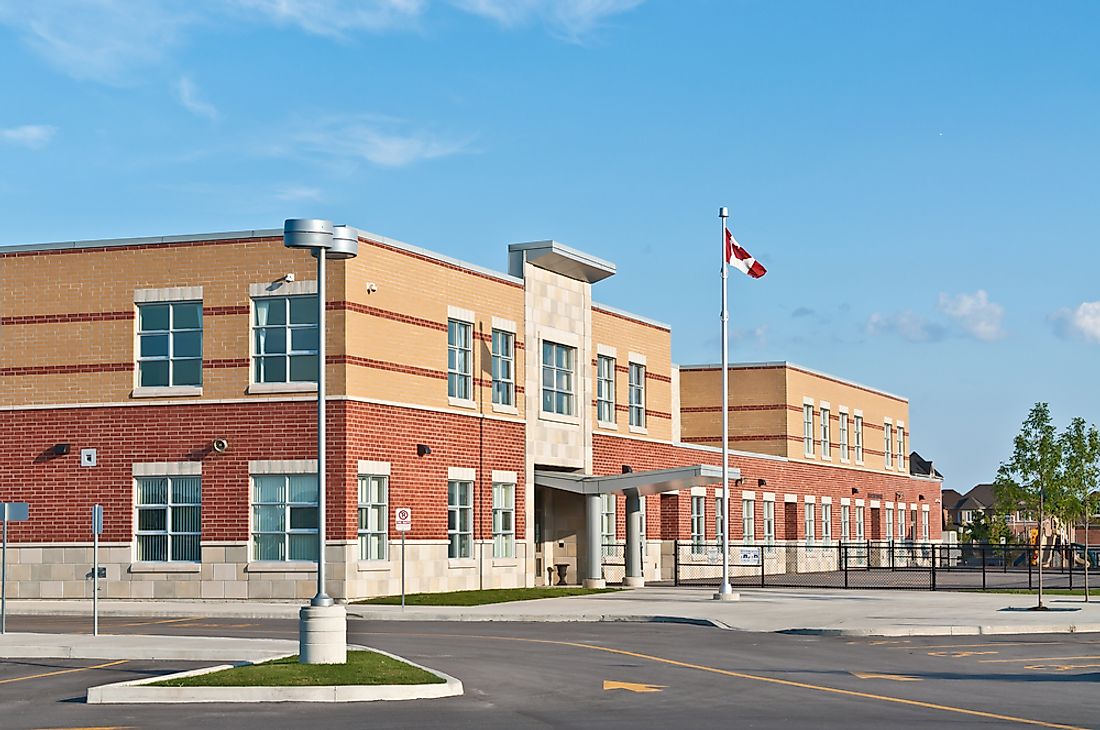The Education System of Canada

The system of education in Canada is twofold, featuring both public and private institutions at all levels. Generally speaking, education begins at primary school and continues to secondary school. Children usually begin kindergarten at age 4 or 5 and may attend for 1 or 2 years. The majority of students attend first grade at 6 years of age. The school year follows the typical North American schedule, which begins in September and ends in June.
A secondary school may finish in either grade 11 or 12, depending on the province. At a national level, education is required until at least the age of 16. Providing public education, however, is the responsibility of the provinces. The age requirement, therefore, may be higher depending on the province. Once finished secondary school, students may move on to a technical college, career school, community college, or university.
Canada has approximately 15,500 primary and secondary schools and 5.3 million enrolled students. These schools are further divided as follows: primary (10,100), secondary (3,400), and mixed primary and secondary (2,000). Each school has an average student body of 350.
Role of Government in Education
As mentioned, public education is the responsibility of each province. It is provided at no cost to students as long as age and residency requirements are met. Each province has an independent board or department of education that oversees issues concerning the curriculum, budget, and staff of public schools. This board is managed by a minister, who is usually elected by the local legislative body and officially appointed by the local head of government. The board or department members are usually elected by the general public.
Public funding for education in Canada comes from all levels of government (federal, provincial, and local). Local communities usually pay a tax in order to support the local school district. The budget of each school is based on various factors, including student body size, location, and any unique needs of the school or community.
Role of Language in the Education System
Canada is a bilingual country with two official languages: English and French. The majority of French-speaking citizens live in the province of Quebec. However, the language rights of French-speaking citizens living outside of Quebec and English-speaking citizens living within Quebec are protected by federal law. This protection means that regardless of where a student lives, they have the right to an education that is provided in their first language that is either English or French. To carry out this rule, each province has created school boards specifically for French-language schools, and Quebec has the same for English-language schools.
Role of Religion in the Education System
Just as a language in school is constitutionally protected in Canada, so too is religion, in some instances. The government of Canada also provides funding for separate religious schools, but only if the school was established before the province officially became part of Canada. Today, this federal protection is afforded only in 3 provinces: Saskatchewan, Alberta, and Ontario.







